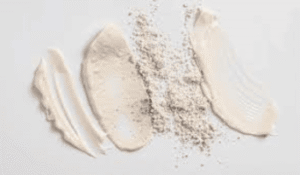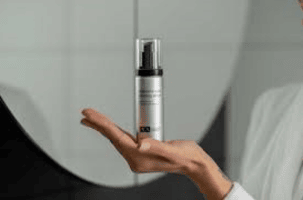Have you ever been totally overwhelmed while you were standing in front of a skincare aisle? You’re not alone. With countless bottles promising miracles through scientific-sounding ingredients, finding the right skincare active ingredients for your specific concerns can feel like trying to solve a complex puzzle.
Whether you’re battling breakouts, fighting signs of aging, or simply wanting to maintain healthy skin, understanding active ingredients is your first step toward skincare success. From retinoids to antioxidants, exfoliating acids to peptides, we’ll demystify these powerful compounds and help you build a routine that actually works.

Understanding Skincare Active Ingredients
The mainstays of your skincare products are the active ingredients, which are what actually cause noticeable changes in your skin. Unlike inactive ingredients that might help with product texture or preservation, active ingredients are specifically chosen for their biological effects on the skin.
Each active serves specific functions, whether that’s increasing cell turnover, fighting free radicals, or strengthening your skin barrier. The key to successful skincare isn’t loading up on every active available but rather choosing the right combination that addresses your particular concerns.
Many people make the mistake of using too many active ingredients simultaneously, which can lead to irritation, sensitivity, and compromised skin barriers.
Identifying Your Skin Type and Concerns
You must honestly evaluate your skin type and concerns before focusing on any particular skincare active ingredient. This foundational step ensures you choose products that work with your skin rather than against it.
Skin Types
Dry skin
Typically feels tight, may appear flaky, and lacks oil. People with dry skin benefit from hydrating and nourishing active ingredients.
Oily skin
Produces excess sebum, often appears shiny, and may be prone to enlarged pores and breakouts. Oil-controlling and lightweight active ingredients work best.
Combination skin
Has both dry and oily spots, usually a drier cheek area and an oily T-zone. This skin type requires balanced formulations.
Sensitive skin
Reacts easily to products with redness, irritation, or discomfort. Gentle, soothing active ingredients are essential.
Normal skin
Has few sensitivities and is balanced—it’s neither too oily nor too dry.
Common Concerns
- Acne and breakouts- Require ingredients that control oil production, fight bacteria, and gently exfoliate.
- Hyperpigmentation and dark spots- React to evening and brightening substances.
- Wrinkles and fine lines– These are reduced by Collagen-stimulating and antioxidant ingredients
- Dullness and uneven texture- Improve with gentle exfoliants and hydrating ingredients.
- Redness and sensitivity- These need calming, anti-inflammatory active ingredients.
By matching skincare active ingredients to your specific concerns rather than trends, you’ll build a more effective routine with visible results.
Essential Skincare Active Ingredients for Different Concerns
Let’s explore the most effective skincare active ingredients categorized by their primary benefits:
For Exfoliation and Cell Turnover
Alpha Hydroxy Acids (AHAs)
AHAs like glycolic acid, lactic acid, and mandelic acid work by dissolving the bonds between dead skin cells, promoting their removal. These water-soluble acids are excellent for improving skin texture, reducing fine lines, and brightening the complexion.
Glycolic acid
Has the smallest molecular size among AHAs, allowing deeper penetration. It’s particularly effective for addressing signs of aging and hyperpigmentation but may be too intense for sensitive skin.
Lactic acid
Offers similar benefits with less irritation potential, making it suitable for those new to chemical exfoliation or with more sensitive skin. It also provides hydration benefits.
Mandelic acid
Has the largest molecule size, making it gentler and ideal for sensitive or acne-prone skin, especially for those with deeper skin tones at risk for post-inflammatory hyperpigmentation.

Beta Hydroxy Acid (BHA)
Salicylic acid
This is the main BHA found in skincare products. Being oil-soluble, it can penetrate clogged pores to dissolve excess sebum and debris. This feature makes it ideal for skin types that are prone to acne and oiliness. Salicylic acid also has anti-inflammatory properties that help calm existing breakouts.
Polyhydroxy Acids (PHAs)
PHAs like gluconolactone and lactobionic acid represent the gentlest exfoliating acids. Their larger molecular structure limits penetration, resulting in surface-level exfoliation with minimal irritation.PHAs also function as humectants, drawing moisture into the skin.
These qualities make them suitable for sensitive, reactive skin types that cannot tolerate other exfoliating acids.
For Anti-Aging and Skin Renewal
Retinoids
The retinoid family represents some of the most researched and effective skincare active ingredients for addressing signs of aging. Vitamin A compounds called retinoid enhance skin texture, promote collagen synthesis, and increase cell turnover.
Retinol
This is the most common over-the-counter retinoid. It must convert to retinoic acid in the skin, making it less potent but more tolerable than prescription options.
Retinal (retinaldehyde)
Requires one conversion step to retinoic acid, making it more effective than retinol but still gentler than prescription retinoids.
Prescription retinoids
Like tretinoin and adapalene are the most potent forms, requiring no conversion in the skin. They deliver faster results but may cause more irritation initially.
Bakuchiol
This isn’t technically a retinoid but often gets mentioned alongside them as a plant-derived alternative that provides similar benefits without the typical irritation.
Peptides
Peptides are chains of amino acids that serve as building blocks for proteins in the skin, including collagen and elastin. Different peptides offer various benefits:
- Signal peptides encourage your skin to produce more collagen.
- Carrier peptides aid in delivering trace elements required for collagen synthesis and wound healing.
- Neurotransmitter-affecting peptides (sometimes called ‘Botox-like peptides’) temporarily reduce muscle contractions that lead to expression lines.
- Enzyme inhibitor peptides stop the collagen already in the body from breaking down.
For Hydration and Barrier Support
Hyaluronic Acid
This molecule holds up to 1,000 times its weight in water, making it an exceptional hydrator. Different molecular weights of hyaluronic acid target different skin layers:
- Low molecular weight penetrates deeper but may trigger inflammation in sensitive individuals.
- High molecular weight stays on the surface, providing immediate plumping and hydration. Formulations with multiple weights provide thorough hydration across the layers of the skin.
Ceramides
These lipids naturally occur in the skin’s barrier, holding skin cells together like mortar between bricks. Supplementing with ceramides helps:

- Strengthen the skin barrier
- Prevent moisture loss
- Protect against environmental damage
- Soothe sensitivity and inflammation
Products containing a mixture of ceramides alongside cholesterol and fatty acids most closely mimic the skin’s natural barrier composition.
For Brightening and Evening Out Skin Tone
Vitamin C
This potent antioxidant protects against environmental damage, increases collagen formation, and brightens skin. There are various forms:
- L-ascorbic acid is the most potent and researched form but is unstable and can irritate sensitive skin.
- Magnesium ascorbyl phosphate is more tender and steadier.
- Tetrahexyldecyl ascorbate is oil-soluble, allowing deeper penetration.
- Sodium ascorbyl phosphate is stable and suitable for acne-prone skin.
Niacinamide (Vitamin B3)
There are several advantages to using this multipurpose skincare active ingredient:
- Regulates oil production
- Strengthens the skin barrier
- Reduces redness and inflammation
- Fades hyperpigmentation
- Minimizes pore appearance
Most skin types tolerate niacinamide well, with optimal results at 2-5% concentrations. Higher percentages may cause irritation without additional benefits.
Alpha Arbutin
This derivative of hydroquinone inhibits tyrosinase, the enzyme involved in melanin production. Alpha arbutin effectively fades hyperpigmentation with less irritation potential than hydroquinone.
For Protection and Repair
Antioxidants
These compounds neutralize free radicals from UV exposure and pollution that would otherwise damage skin cells. Key antioxidants include:
- Vitamin E (tocopherol) works synergistically with vitamin C, enhancing its stability and effectiveness.
- Resveratrol derived from grapes, offers anti-aging and anti-inflammatory benefits.
- Coenzyme Q10 (ubiquinone) energizes cells and reduces oxidative damage.
- Green tea extract contains polyphenols that calm inflammation and provide photoprotection.
- Centella Asiatica (Cica) is traditional medicinal herb contains several active compounds including:
- Madecassoside
- Asiaticoside
- Madecassic acid
- Asiatic acid
These components accelerate wound healing, reduce inflammation, and boost collagen production, making Centella ideal for sensitive or compromised skin.
Combining Skincare Active Ingredients
The art of combining skincare active ingredients requires understanding both synergies and conflicts. Some ingredients work better together, while others should never mix.

Beneficial Combinations
- Vitamin C + Vitamin E + Ferulic Acid– This potent trio enhances stability and effectiveness, with each component boosting the others.
- Retinoids + Peptides- These work through different pathways to boost collagen production and fight aging signs.
- Niacinamide + Almost Anything- This versatile ingredient generally plays well with others, though some controversy exists about using it with vitamin C.
- Hyaluronic Acid + Ceramides- Together, they provide comprehensive hydration and barrier support.
Combinations to Avoid
- Retinoids + AHAs/BHAs- Using these potent exfoliators together often leads to irritation and barrier damage. Separate them into different routines (morning/evening) or alternate days.
- Vitamin C + AHAs/BHAs- The different pH requirements can render both ingredients less effective and potentially irritating.
- Multiple Potent Actives Simultaneously- Using retinoids, strong vitamin C, and exfoliating acids in the same routine overwhelms the skin.
Remember that skincare active ingredients work best when introduced gradually. Start with lower concentrations and fewer products, then slowly build your routine as your skin adapts.
Reading Product Labels
The concentration and placement of active ingredients on labels reveals much about product effectiveness. Here’s how to decode skincare labels:
Ingredient Lists
Ingredients are listed in decreasing order of concentration, up until the 1% threshold, after that, they can be listed in any order. When key skincare active ingredients appear at the beginning of the list, this generally indicates effective concentrations.
Marketing vs. Reality
A product may prominently feature ‘hyaluronic Acid’ on its packaging, but if this ingredient appears at the end of the list, the concentration is likely too low to provide significant benefits.
Look Beyond Buzzwords
There are no rules or set definitions for terms like ‘clean,’ ‘natural,’ and ‘dermatologist tested.’ Focus on specific skincare active ingredients and their concentrations instead.
Building Your Routine with Skincare Active Ingredients
Creating an effective skincare routine requires thoughtful integration of active ingredients based on your concerns and skin tolerance.
Morning Essentials
- Use a gentle cleanser during the day to remove nightly buildup without depleting the skin of its natural oils.
- Vitamin C-based antioxidant serum for protection during the day
- Hydrating ingredients such as glycerin or hyaluronic acid
- Moisturizer appropriate for your skin type
- Sunscreen (minimum SPF 30) to protect your skin and prevent active ingredients from increasing photosensitivity
Evening Treatment
- Complete cleansing to get rid of sunscreen, makeup, and contaminants from the environment
- Treatment products containing your targeted active ingredients (retinoids, exfoliating acids, etc.)
- Barrier-supporting ingredients to counterbalance potentially irritating actives
- Occlusive moisturizer which blocks water loss and seals in active substances.
Frequency Guidelines
- Start slowly with potent skincare active ingredients (1-2 times weekly)
- Gradually increase frequency as tolerance builds
- Pay attention to your skin and cut back on frequency if irritation arises.
- Alternate active ingredients on different nights to prevent over exfoliation
FAQS
Which skincare active ingredients work best for acne-prone skin?
For acne-prone skin, look for products containing salicylic acid (BHA) to unclog pores and control oil production. Benzoyl peroxide aids in the destruction of microorganisms that cause acne, and niacinamide controls sebum and lessens irritation. Retinoids like adapalene are excellent for preventing breakouts and minimizing scarring.
Azelaic acid offers various benefits, fighting bacteria, decreasing inflammation, and eliminating post-acne scars. Always balance these active ingredients with hydrating compounds like hyaluronic acid to prevent the drying effects that can trigger more oil production.
How long does it take for the active ingredients in skincare products to start showing result?
Results timeline varies by ingredient and concern. Hydrating ingredients like hyaluronic acid show immediate plumping effects, while mild exfoliants like AHAs can improve texture within 1-2 weeks. More significant changes require patience: niacinamide needs 4-8 weeks for visible improvement in redness and pigmentation, while retinoids typically require 12 weeks for noticeable reduction in fine lines and acne.
Complete skin cell turnover takes approximately 28 days for younger individuals and up to 40+ days for mature skin, so give new products at least this long before assessing their full effectiveness.
Can I use multiple skincare active ingredients in the same routine?
Yes, but with careful planning. Some actives complement each other beautifully—vitamin C pairs well with vitamin E and ferulic acid, while hyaluronic acid works harmoniously with most ingredients.
However, potent actives like retinoids should not be used simultaneously with AHAs/BHAs or high-strength vitamin C, as this can cause irritation. Layer products from thinnest to thickest consistency, waiting 1-2 minutes between applications.
Are high-priced goods containing active chemicals always superior to less expensive ones?
When it comes to skincare active ingredients, price and efficacy are not always correlated. Many affordable brands now offer scientifically formulated products with optimal concentrations of key actives. The efficacy depends more on ingredient concentration, formulation quality, pH levels, and packaging that maintains stability.
Expensive products sometimes offer more elegant textures, longer-lasting fragrances, or luxury packaging rather than superior results. Focus on the active ingredient list and concentration rather than price point
How should I adjust my active ingredients routine as my skin ages?
As skin ages, its needs evolve, requiring adjustments to your active ingredient strategy. Introduce retinoids in your late 20s-30s at lower concentrations, gradually increasing strength as tolerated. Add peptides and more intensive hydrators like ceramides in your 40s to support declining natural production.
By your 50s+, emphasize barrier repair ingredients, higher concentrations of retinoids (if tolerated), and growth factors to stimulate collagen. Throughout all ages, maintain consistent use of broad-spectrum SPF and antioxidants, while increasing hydration support as natural oil production decreases with age.
Conclusion…
Skincare active ingredients offer amazing opportunities to address almost every skin condition, but success depends on making informed choices. By understanding your skin’s needs and the specific benefits of different active ingredients, you can build a routine that delivers visible results without unnecessary irritation or expense.
Take time to research the specific skincare active ingredients that address your unique concerns, introduce them gradually, and give them adequate time to work. The journey to healthy, balanced skin is personal and often requires some trial and error.



